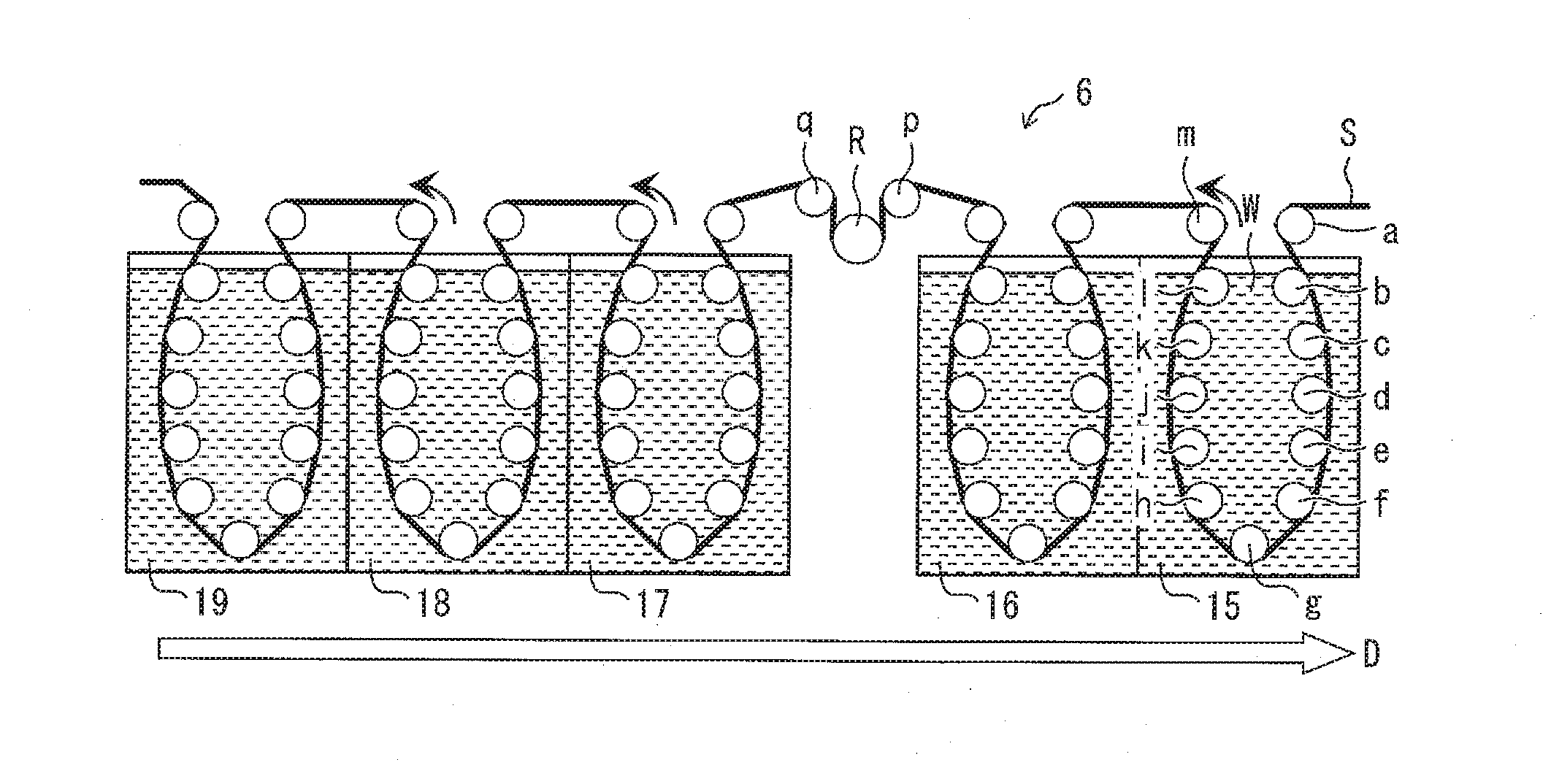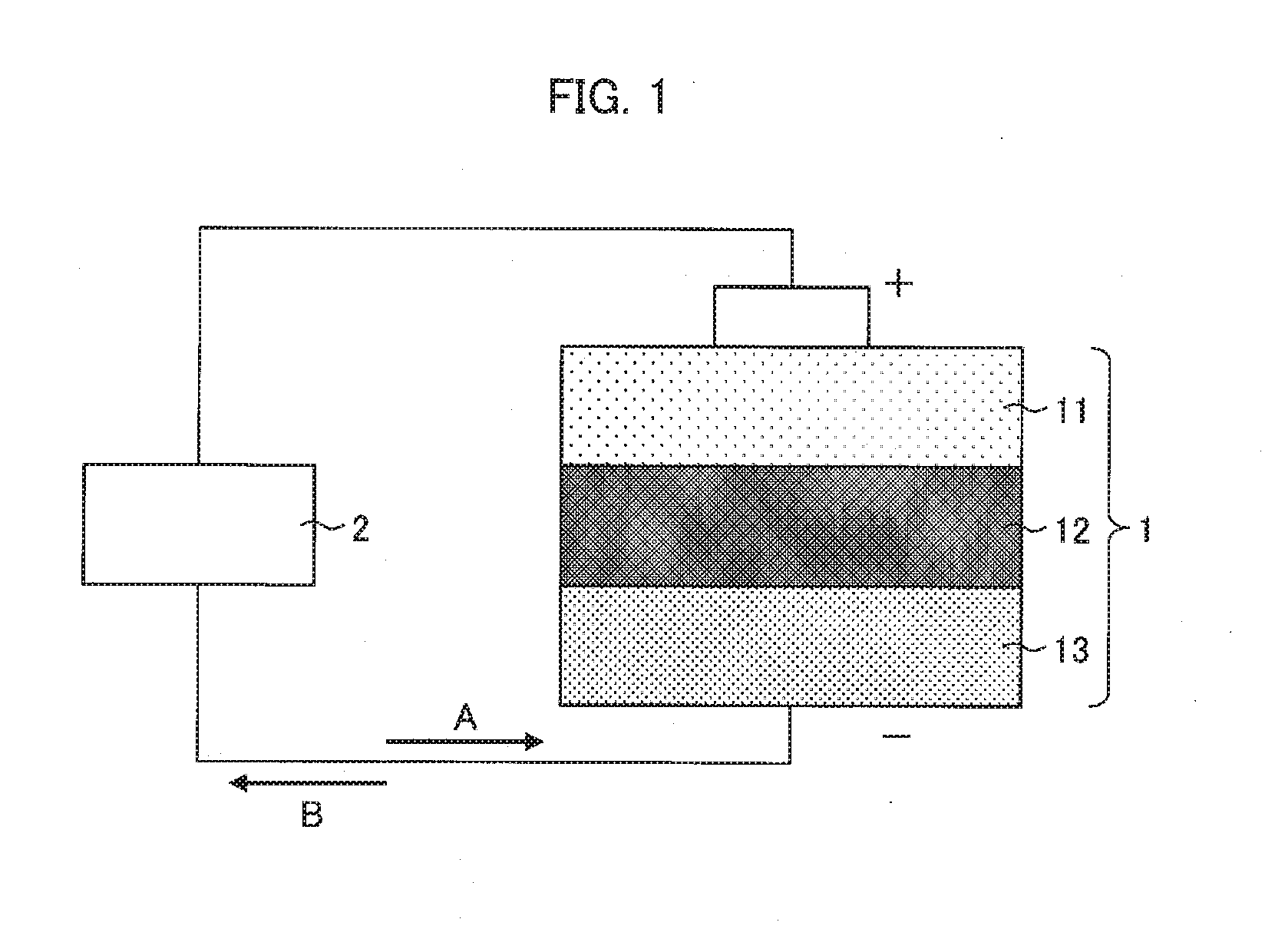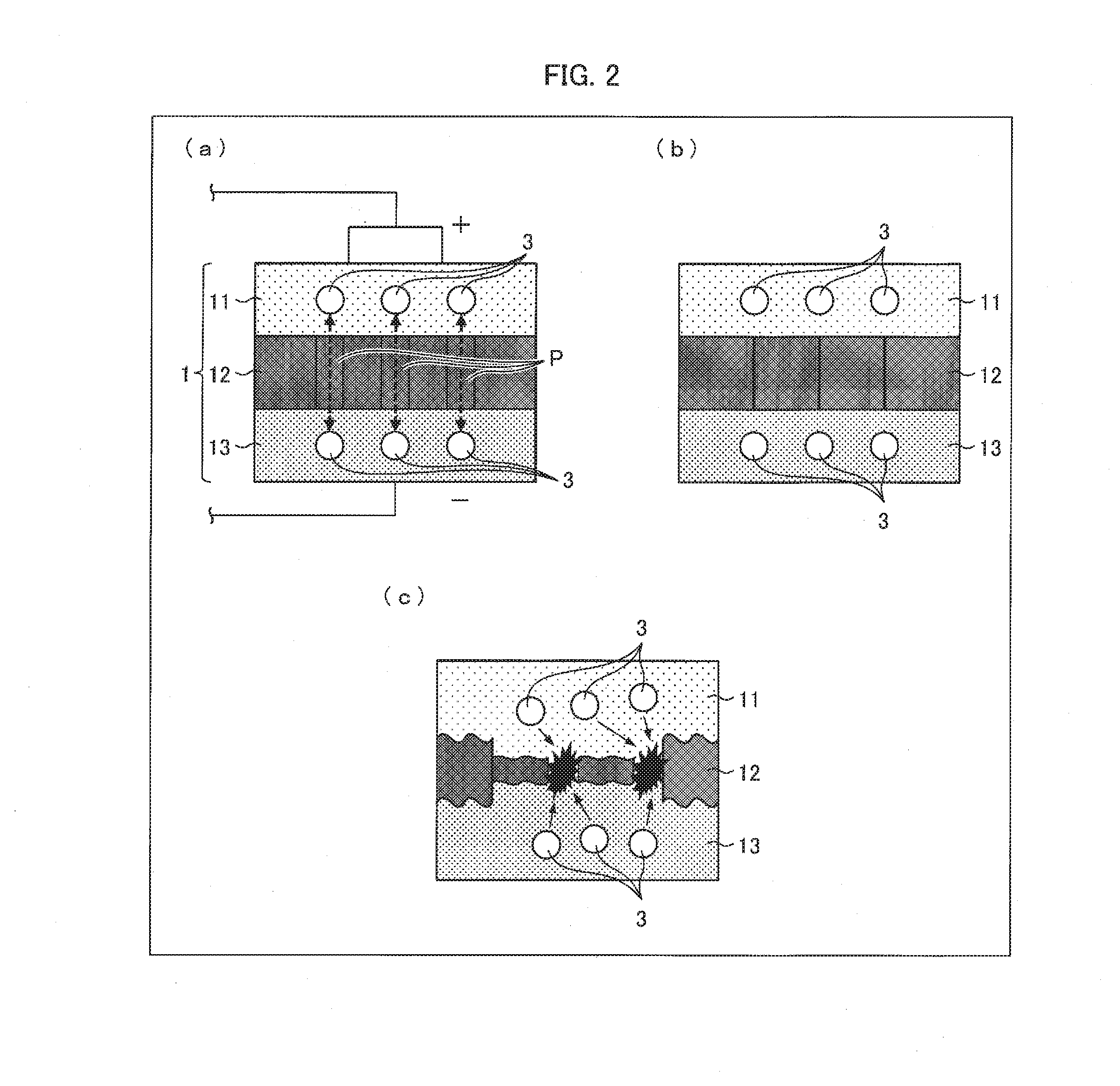Separator washing method, separator producing method, and film washing method
- Summary
- Abstract
- Description
- Claims
- Application Information
AI Technical Summary
Benefits of technology
Problems solved by technology
Method used
Image
Examples
embodiment 1
[0054]The following description will discuss Embodiment 1 of the present invention, with reference to FIG. 4.
[0055]In the following embodiment, a washing method for washing a heat-resistant separator, which is a long and porous battery separator, is described. A heat-resistant layer of the heat-resistant separator is formed by applying an aramid / NMP (N-methylpyrrolidone) solution (coating solution) to a porous film. In this case, NMP (remove-target substance) which is a solvent sinks into pores of the porous film.
[0056]An air permeability of the heat-resistant separator in which NMP remains in the pores is lower than that of a heat-resistant separator in which no NMP remains in pores. As the air permeability is lower, movement of lithium ions of a lithium-ion secondary battery including the heat-resistant separator is further interfered with, and consequently output of the lithium-ion secondary battery decreases. Therefore, it is preferable to wash the heat-resistant separator so th...
embodiment 2
[0089]The following description will discuss Embodiment 2 of the present invention with reference to FIG. 5. For convenience of explanation, identical reference numerals are given to constituent members having functions identical with those of the constituent members described in Embodiment 1, and descriptions of such constituent members are omitted here. This applies to other embodiments described below.
>
[0090]FIG. 5 is a cross-sectional view illustrating a peripheral configuration of a guide roller G used in a washing method of the present embodiment.
[0091]As illustrated in FIG. 5, a washing device 6 further includes a guide roller G, a Teflon bar s, and a Teflon tube t. Note that “Teflon” is a registered trademark.
[0092]The guide roller G (i) is fixed to a transferring path on which the heat-resistant separator S is transferred, (ii) does not rotate, and (iii) is provided between rollers 1 and m for a washing tank 15. An axis of the guide roller G extends in a depth direction of ...
embodiment 3
[0108]The following description will discuss Embodiment 3 of the present invention with reference to FIG. 6.
>
[0109]FIG. 6 is a cross-sectional view illustrating a peripheral configuration of a roller m (transferring roller) used in a washing method of the present embodiment. As illustrated in FIG. 6, a washing device 6 further includes a scrape-off bar BL (second member).
[0110]The scrape-off bar BL is a blade for scraping off washing water W which is transferred along the roller m.
[0111]A slight gap is provided between the roller m and the scrape-off bar BL. With the configuration, the washing water W adhering to the roller m moves to the scrape-off bar BL while damage on a surface of the roller m and abrasion of the scrape-off bar BL are prevented.
>
[0112]The washing method of the present embodiment includes, in addition to the steps in the washing method of Embodiment 1, the step of removing washing water W from the roller m for transferring the heat-resistant separator S between a...
PUM
 Login to View More
Login to View More Abstract
Description
Claims
Application Information
 Login to View More
Login to View More - R&D
- Intellectual Property
- Life Sciences
- Materials
- Tech Scout
- Unparalleled Data Quality
- Higher Quality Content
- 60% Fewer Hallucinations
Browse by: Latest US Patents, China's latest patents, Technical Efficacy Thesaurus, Application Domain, Technology Topic, Popular Technical Reports.
© 2025 PatSnap. All rights reserved.Legal|Privacy policy|Modern Slavery Act Transparency Statement|Sitemap|About US| Contact US: help@patsnap.com



